- Home
- Jane Yolen
Favorite Folktales From Around the World Page 2
Favorite Folktales From Around the World Read online
Page 2
Basically there are three kinds of folk stories: the oral, the transcribed, and the literary or art tale. No one kind of story is better than another; there is no contest since there are no set or even settable standards. A good story is simply one that lasts because the listeners or readers like it and demand it again. Told and retold or read and reread, the story exists neither in the mouth nor on the page, neither in the ear nor the eye. It is created between. No two listeners hear exactly the same tale. Each brings something of himself to the story, and the story is then re-created between the teller and the listener, between the writer and the reader.
We can actually hear oral tales being changed by different tellers, though we cannot, of course, observe the re-creation by the listener. But by looking at tale variants, one can get a sense of the kind of metamorphosis a story undergoes in the listening ear. Folktales from the oral tradition carry with them the thumbprints of history. Each place, each culture, each teller leaves a mark. As Italo Calvino has written, the folktale “tends to absorb something of the place where it is narrated—a landscape, a custom, a moral outlook, or else merely a very faint accent or flavor of that locality.” Reading as many tales as I had to in order to make the selections for this book, I was reminded again and again how bits and pieces of stories—archetypal characters, situations, magical hats or sticks or rings—have been lifted from one teller’s quilt and sewn into another. The patchworking of Story is endless. How many variations of the crop-division story (tale type 1030) have I come upon, that tale in which the farmer outsmarts Old Nick by planting either a top crop or a root crop? In the German story reprinted here from Grimm’s, ‘The Peasant and the Devil,” the only actors are a wily farmer and the Prince of Lies himself, the crops parsnips and grain. In the Russian version, the peasant outwits a bear. In the Communist Chinese, the farmer tricks his greedy landlord. In the Egyptian, the actors are a wolf and a mouse. In the American slave narrative “Sheer Crops,” Brer Rabbit gulls Brer Bear. The crops range from potatoes and corn to taro and wheat, but in any language it is a delightful story: witty, carefully developed, with an ending that is as inevitable as it is satisfying. Every culture seems to treasure the cunning of the underdog.
Tales that are set down and then transported through time on the pages of a book have a slightly different character from those orally transmitted. Not better—different. Often events glossed over or forgotten by the oral tellers are tidied up, made cleaner, elaborated upon, fixed to serve a specific purpose. Even some of our best-known oral transcribers were “guilty” of such a liberal hand. It is no longer a scholarly secret that Sir Walter Scott added verses to the folk ballads he collected or that the Brothers Grimm “helped” their respondents, several of whom were not really German peasants, as the Grimms had implied, but rather middle-class French Huguenots whose sources were most likely Perrault’s literary adaptations of old tales. In fact, many newly recovered stories can be traced back to literary sources, and so we reseed and resow our fields of tales. Sometimes, like the crop dividers, we get what is on top and sometimes we take what is below. Yet we must remind ourselves that most transcribers are not violating the tales. Rather, they are well within the tradition of tale telling, which is a tradition of constant and continuing re-creation.
Francis James Child, collector of the Child ballads (and himself not above aiding the process), once suggested that the tradition is abetted by one of three different kind of tellers: the blind beggar, the nurserymaid, and the clerk. The blind beggar sings for his supper and so is constrained to change his story to suit the listening audience, the better to be paid for his tales. The nurserymaid changes stories to suit what she assumes are the appetites and moral needs of her young charges. And the clerk is the literary teller, writing down stories that suit the needs of an audience of one, the self.
Occasionally, of course, a particular transcriber is so able, so effective, so inventive, that the story itself is changed forever. Charles Perrault was such a reworker. He reinvented, among others, “Cinderella” in such a potent form that it is his telling and not the five hundred European variants that remains the premier version of the tale (though I have chosen another, less-known version, the Russian “Vasilisa the Beautiful”). In his seventeenth-century retelling, Perrault gave Cinderella a fairy godmother and a midnight warning, two things which up to that time she did not possess. And then—history draws a scrim over the actual events and we can only guess—someone, Perrault or perhaps the English translator of his Histoires ou contes du temps passé, made a brilliant mistake. The heroine’s fur (vair) slipper was misread as glass (verre). Thus in Story all mistakes are made true by the telling.
Some stories, though, are born directly onto the page, strange children of an oral father and a literary mother. Such art tales have been made popular for centuries by authors such as Homer, Apuleius, Aesop, Marie de France, Mme. Le Prince de Beaumont, Hans Christian Andersen, Oscar Wilde, Laurence Housman, Isak Dinesen, Isaac Bashevis Singer. Today most stories of this kind are marketed as nursery fare or as genre tales by children’s-book authors or science fiction/fantasy writers and exist in a narrow ghetto apart from main-stream literature, much to the reading public’s loss. Such stories owe their settings, their archetypal characters, even bits of their magic to the past, but thematically they draw upon the century and the place in which they are written. This should not be surprising. Authors are as rooted in society as their readers. And if they reach back to earlier beliefs upon which to base their tales, perhaps the reason is, as Graham Greene contends, that “man has to resort to some kind of superstition. They are the nails in his boots that keep him on the rock.”
Oral, transcribed, or literary tale—what matters is whether it is a good story. In the vast tapestry of Story woven on a literary warp there are threads of the oral and transcribed traditions. Back and forth the shuttle has gone, thoroughly confusing the patterns until only the most assiduous scholar can pick through and trace down any one particular strand. And in doing so, the sorter and picker often misses the beauty of the cloth. In this book, though the emphasis is on stories from the oral tradition, an occasional tale tampered with and tidied up by its original transcriber or literary source has slipped in. The one thing I have tried to avoid is stories that have remained literary tales, no matter how wonderful, whether from the magic-filled Arabian Nights collection, Andersen’s 150-plus classic tales, Boccaccio’s lusty Decameron, Washington Irving’s Americana, Oscar Wilde’s artful fairy stories, the Arthurian faerie of Marie de France, or the shtetl re-creations of Isaac Bashevis Singer. There are many magnificent collections of such art tales, many of them quite folklike; but they are distinguished from the oral stories by their grace of prose, an elegant formality, an appreciation and conscious use of magic as metaphor, extensive descriptive passages, and a literary diction.
This collection comes more directly from the folk archives where tales are basic, with a metaphoric content that must be read into the story by sophisticated listeners, where the language has been honed by centuries of tongue-polishing, where the stories are not personal history artfully disguised but are more often, in Roger Abrahams’s words, a codification of “hard-won truths” and the dramatization of “the rationale behind traditions.” To aid the folklorist manqué, however, I have annotated each tale at the end of the book, including those in this Introduction.
III
There is no argument: stories are powerful. Even before literary criticism, psychological interpretation, or the anthropological/sociological/historical schools of folklore analysis were born, the people who told and listened to stories knew it. So tales that warned about speaking out of turn or talking too much or the foolishness of certain kinds of wisdom found their way into the body of folklore.
In Africa, one of the most popular of such stories is told by many different tribes. It also traveled on the slave ships to America, where it became a jocular tale. The following version is from the Nupe of Nigeria:
THE TALKING SK
ULL
A hunter goes into the bush. He finds an old human skull. The hunter says: “What brought you here?” The skull answers: “Talking brought me here.” The hunter runs off. He runs to the king. He tells the king: “I found a dry human skull in the bush. It asks you how its father and mother are.”
The king says: “Never since my mother bore me have I heard that a dead skull can speak.” The king summons the Alkali, the Saba, and the Degi and asks them if they have ever heard the like. None of the wise men has heard the like and they decide to send a guard out with the hunter into the bush to find out if his story is true and, if so, to learn the reason for it. The guard accompany the hunter into the bush with the order to kill him on the spot should he have lied. The guard and the hunter come to the skull. The hunter addresses the skull: “Skull, speak.” The skull is silent. The hunter asks as before: “What brought you here?” The skull does not answer. The whole day long the hunter begs the skull to speak, but it does not answer. In the evening the guard tell the hunter to make the skull speak, and when he cannot they kill him in accordance with the king’s command. When the guard are gone the skull opens its jaws and asks the dead hunter’s head: “What brought you here?” The dead hunter’s head replies: “Talking brought me here!”
Stories are powerful. They are a journey and a joining. In a tale we meet new places, new people, new ideas. And they become our places, our people, our ideas. As the noted Russian author and literature specialist Kornei Chukovsky has written, storytelling fosters “compassion and humanness, this marvelous ability of man to be disturbed by another’s misfortunes, to feel joy at another being’s happiness, to experience another’s fate as one’s own.”
Next, the story is history, for each tale carries with it over the miles and through the generations the bruises and blandishments and embraces of the societies in which it has dwelt. “Cinderella” can be traced back to China, where noblewomen had their feet bound as infants. This emphasis on the lotus foot in the tiny slipper that defines the nobility of its wearer can still be seen in a number of the variants. “Red Riding Hood,” according to Professor Jack Zipes in his controversial study Fairy Tales and the Art of Subversion, began as a warning tale to civilize French girls out of sexual experimentation so effectively that, even when the ending of the story has been changed, the moral is set: Do not go to bed with wolves! Civilizations are made up of cultures; stories record the aspirations of the people within cultures. Yet the stories last long past the cradling societies. In Robert Louis Stevenson’s charming poem, we see this clearly:
Bright is the ring of words
When the right man rings them,
Fair the fall of songs
When the singer sings them.
Still they are carolled and said—
On wings they are carried—
After the singer is dead
And the maker buried.
Then, stories are a mystery, giving out clues to open the locked doors of self. Though the Jungians have been trying different keys in that lock for some time, not only Jung himself but also his articulate followers Joseph Campbell and Marie von Franz, it took the Freudian psychiatrist Bruno Bettelheim to bring word of the psychological elements to the general public with a best-selling book, The Uses of Enchantment (1976). Bettelheim spoke of the tales lending permission to the listeners. He said that folk stories were not only a record of emotions carried through centuries but were actually part of a child’s rehearsals for adult life. (Though it must be noted by any serious student of the book that the tales he uses as demonstrations were not originally told in the nursery.) In stories like “The Frog-Prince” he sees tumescence and detumescence; in “Red Riding Hood,” menstruation; in “Jack and the Beanstalk,” the Oedipus complex. The fairy tale, says Bettelheim, “takes these existential anxieties and dilemmas very seriously and addresses itself directly to them: the need to be loved and the fear that one is thought worthless; the love of life, and the fear of death.” In this view, stories can be homeopathic, the storyteller a healer.
Recently I attended a fairy tale conference at Princeton University where the participants were so busy being academic about the motifs and morphology of a tale, about the sociological implications of the endings of Grimm stories, about the bourgeois subsumption of the female tale teller, about the psychological embellishments and the validation of emotion, that the words “Once upon a time …” were never spoken. The tale was treated as an anthropological document or as an archaeological dig or as a prototype of therapy or as a product of a particular social-economic evolution. No one remembered even to mention that a story has its own logic, its own meaning, its own integrity, or, in the words of the Maori storyteller:
The breath of life,
The spirit of life,
The word of life,
It flies to you and you and you,
Always the word.
If the story does not have that breath of life, all the journeying, all the history, all the mystery, are for nought. And it is up to the tale teller to make sure that the story speaks.
Whenever misfortune threatened the Jews, Rabbi Israel Baal Shem Tov would retreat to the forest, light the fire, say the prayer and the misfortune would be avoided. In the passing of time this task fell to a second rabbi who knew both the place in the forest and the prayer but not how to light the fire. Nevertheless the misfortune was avoided. A third rabbi knew only the place; the prayer and the fire had been forgotten. But this too was enough and the misfortune was avoided. Finally the task fell to Rabbi Israel of Rizhyn who knew neither the place nor the fire nor the prayer. All he could do was tell the story. “And it was sufficient.”
IV
In the United States today there is a renaissance of storytelling. Except for some few backwoods pockets, storytelling in America was moribund by the mid-twentieth century. The corpse was kept minimally animated by librarians who told stories using book illustrations or flannel-board cutouts or hand puppets or assorted props. First radio, then film, and finally television seemed to have delivered a death blow. Listeners relied on entertainers separated from them by mechanics, and the tellers used stories more as jokes or as lead-ins to comedy routines. Only occasionally could one find a teller of note who was not a librarian—at summer camps, perhaps, or at a church function. But the real social activity of storytelling was propped up in the nursery or the children’s room in the library, as alive as a limp Raggedy Ann.
Then, out of the folk renascence of the sixties, the same young men and women who were attracted by folk crafts were drawn to the purity of folk songs. These young people were eager to rediscover roots, their own or others. Out of that movement another movement was born. In 1974 an infant-sized festival was launched in a pocket-sized town in Tennessee, more to help revitalize the town than to spark a movement. October in Jonesboro, when the leaves have begun turning on the mountainsides and the nights are often cool and the morning fresh with a heavy dew, seemed a magical backdrop against which to set the first American festival dedicated to Story. Some two hundred participants, mostly curious listeners, came that weekend. Today the October Jonesboro festival attracts closer to three thousand, including tellers, would-be tellers, and listeners. There are also festivals, conferences, workshops, and weekends dedicated to storytelling in over twenty other states, as well as in Canada and England.
Out of that first festival grew an organization, NAPPS, the National Association for the Preservation and Perpetuation of Storytelling. Although there had been one or two storytelling organizations before (such as the National Story League in Pennsylvania), NAPPS has gained national attention.
One might dwell on the irony of having to organize and relearn what was once that most human of activities—storytelling. But in fact, in most cultures where Story was (and is) important, storytelling has been an apprenticed occupation. As Joseph Campbell wrote: “There is a romantic idea that myth comes from the people. It doesn’t; it comes from the teacher, the shaman and visi
onary as the giver and interpreter of myth. The visionary translates what he sees into an art or ritual form.” By projection, then, tales—which are the personalizing of the great myths, the bits and pieces of the everyday where the great mythic structures impinge upon humanity—still need a structurer. And that person is the tale teller, who holds culture in the mouth.
The Irish poet-tellers studied their art for 15 years, and had to be wise in philosophy, astronomy, magic, and conversant with 250 prime tales and a hundred subsidiary ones. The shanachies, who told the historical tales, were entrusted with 178 prime stories.
The Greek storytellers learned not only to tell a great body of work, but also to perform on the kithara, which distinguished them from the amateurs who used the lyre.
The Navajo singer recited creation stories that lasted two to three days. Other long prayers and tales to do with the Blessingway ceremonies were in his repertory. Some 30 major ceremonies, each containing hundreds of songs and tales, were committed to memory.
The skalds of the North not only learned scores of tales and songs, but as a vassal to a noble lord, a skald might fight by his master’s side and then either recount his lord’s great battle deeds or sing his master’s death song, adding either—or both—to an already large body of memorized work.
Medieval troubadors were expected to know the current court and countryside favorite tales as well as recite the latest in court scandals, play two instruments well, and further, to be able to repeat the noteworthy theses from the universities.
Irish ollahms and shanachies, African griots, Norse skalds, German minnesingers, French troubadors, Anglo-Saxon gleemen, Norman minstrels—these were but some of the professionals in the world of Story. They told long, complex traditional tales to great gatherings and were repaid for their efforts by a particular place in society, money, gifts, property, wives or husbands, supper, ale, or the high king’s favor.

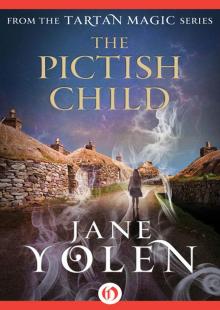 The Pictish Child
The Pictish Child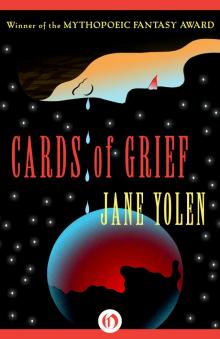 Cards of Grief
Cards of Grief A Plague of Unicorns
A Plague of Unicorns Heart's Blood
Heart's Blood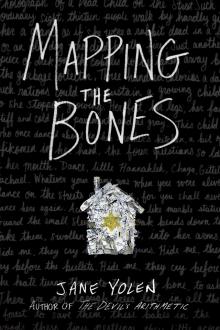 Mapping the Bones
Mapping the Bones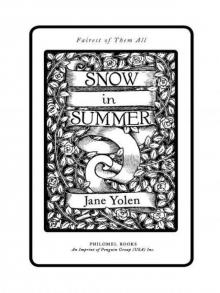 Snow in Summer
Snow in Summer Merlin's Booke: Stories of the Great Wizard
Merlin's Booke: Stories of the Great Wizard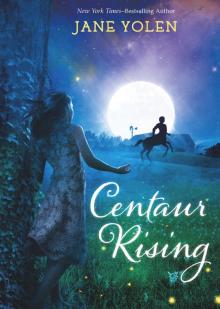 Centaur Rising
Centaur Rising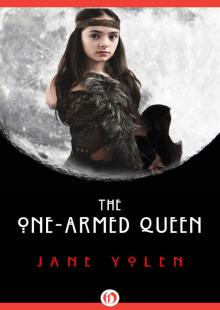 The One-Armed Queen
The One-Armed Queen Dragon's Blood
Dragon's Blood Boots and the Seven Leaguers
Boots and the Seven Leaguers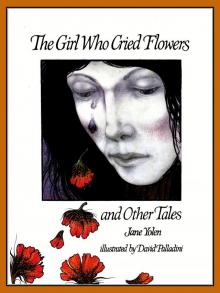 The Girl Who Cried Flowers and Other Tales
The Girl Who Cried Flowers and Other Tales The Wizard of Washington Square
The Wizard of Washington Square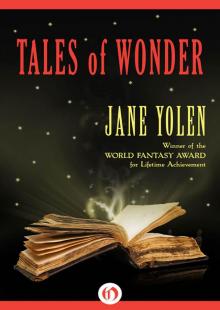 Tales of Wonder
Tales of Wonder The Emerald Circus
The Emerald Circus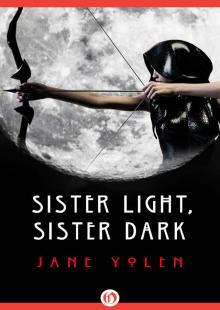 Sister Light, Sister Dark
Sister Light, Sister Dark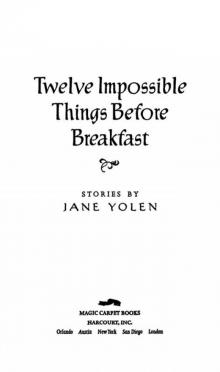 Twelve Impossible Things Before Breakfast
Twelve Impossible Things Before Breakfast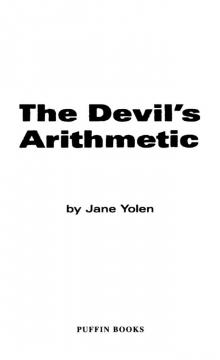 The Devil's Arithmetic
The Devil's Arithmetic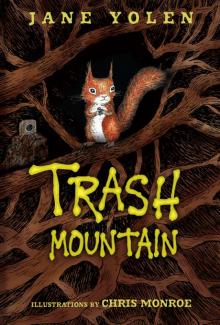 Trash Mountain
Trash Mountain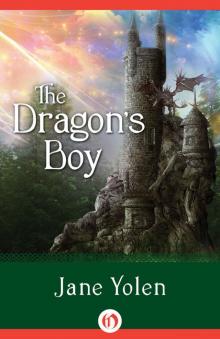 The Dragon's Boy
The Dragon's Boy A Sending of Dragons
A Sending of Dragons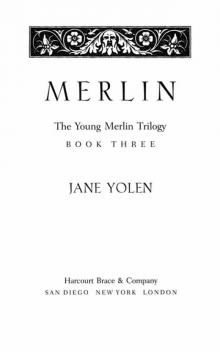 The Young Merlin Trilogy
The Young Merlin Trilogy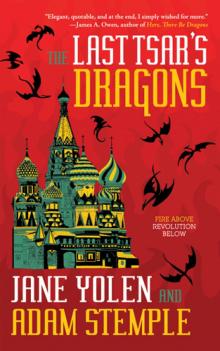 The Last Tsar's Dragons
The Last Tsar's Dragons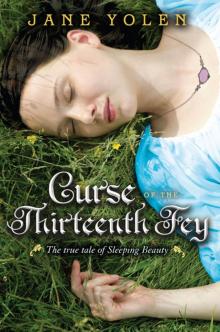 Curse of the Thirteenth Fey: The True Tale of Sleeping Beauty
Curse of the Thirteenth Fey: The True Tale of Sleeping Beauty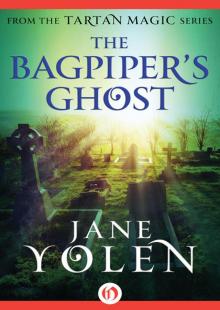 The Bagpiper's Ghost
The Bagpiper's Ghost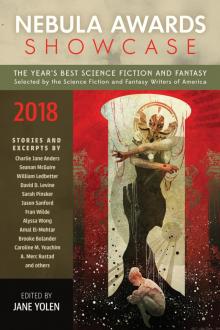 Nebula Awards Showcase 2018
Nebula Awards Showcase 2018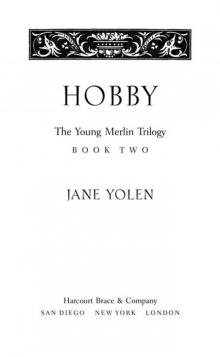 Hobby
Hobby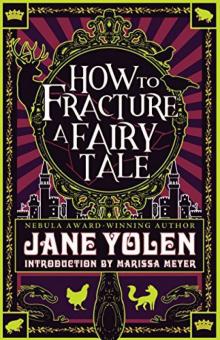 How to Fracture a Fairy Tale: 2
How to Fracture a Fairy Tale: 2 Children of a Different Sky
Children of a Different Sky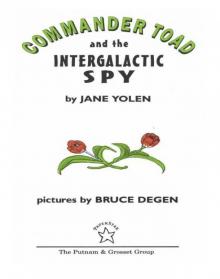 Commander Toad and the Intergalactic Spy
Commander Toad and the Intergalactic Spy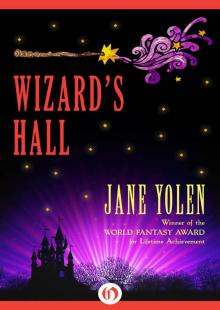 Wizard’s Hall
Wizard’s Hall The Transfigured Hart
The Transfigured Hart Dragonfield: And Other Stories
Dragonfield: And Other Stories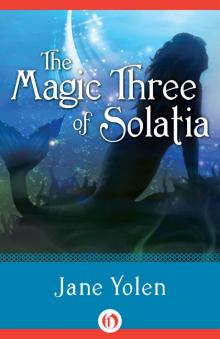 The Magic Three of Solatia
The Magic Three of Solatia The Great Alta Saga Omnibus
The Great Alta Saga Omnibus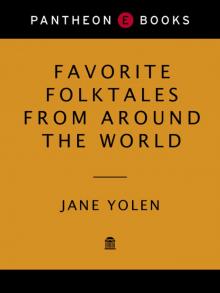 Favorite Folktales From Around the World
Favorite Folktales From Around the World Passager
Passager The Wizard's Map
The Wizard's Map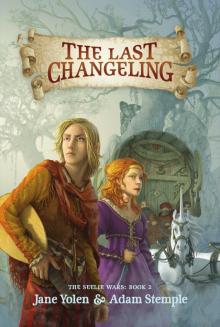 The Last Changeling
The Last Changeling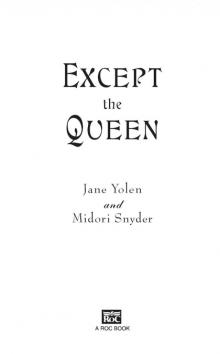 Except the Queen
Except the Queen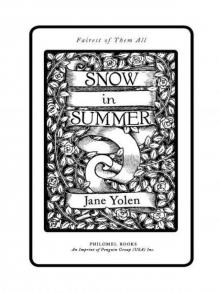 Snow in Summer: Fairest of Them All: Fairest of Them All
Snow in Summer: Fairest of Them All: Fairest of Them All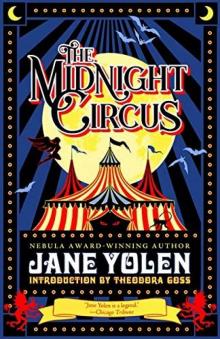 The Midnight Circus
The Midnight Circus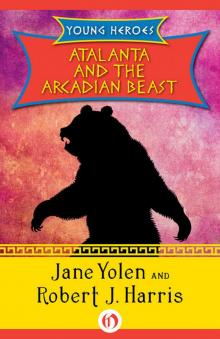 Atalanta and the Arcadian Beast
Atalanta and the Arcadian Beast Finding Baba Yaga
Finding Baba Yaga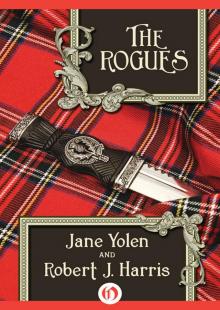 The Rogues
The Rogues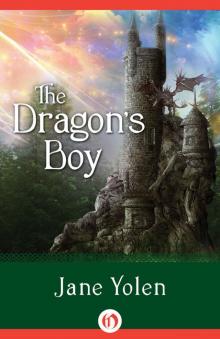 Dragon's Boy
Dragon's Boy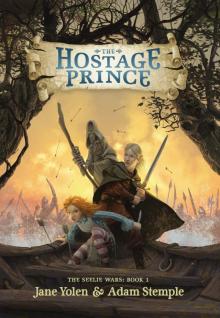 The Hostage Prince
The Hostage Prince Wizard of Washington Square
Wizard of Washington Square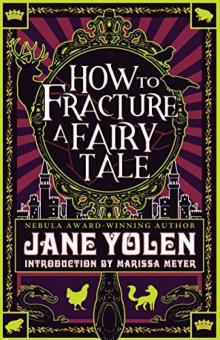 How to Fracture a Fairy Tale
How to Fracture a Fairy Tale Magic Three of Solatia
Magic Three of Solatia Curse of the Thirteenth Fey
Curse of the Thirteenth Fey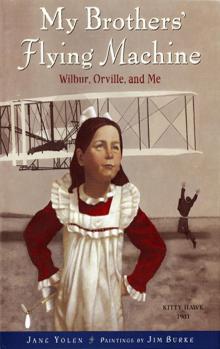 My Brothers' Flying Machine
My Brothers' Flying Machine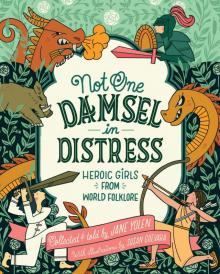 Not One Damsel in Distress
Not One Damsel in Distress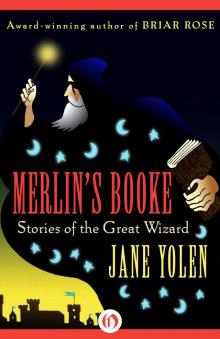 Merlin's Booke
Merlin's Booke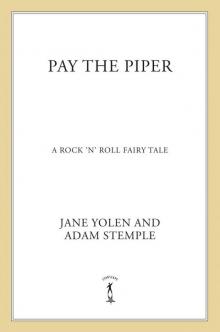 Pay the Piper: A Rock 'n' Roll Fairy Tale
Pay the Piper: A Rock 'n' Roll Fairy Tale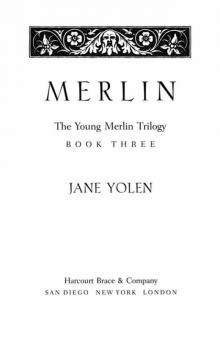 Merlin
Merlin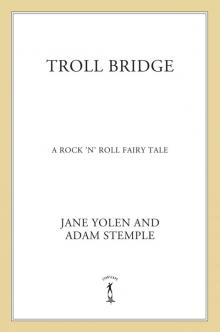 Troll Bridge
Troll Bridge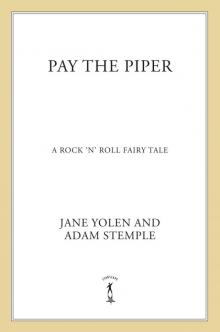 Pay the Piper
Pay the Piper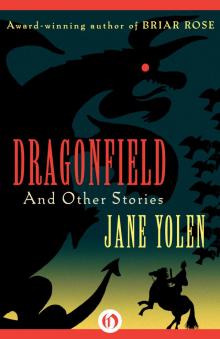 Dragonfield
Dragonfield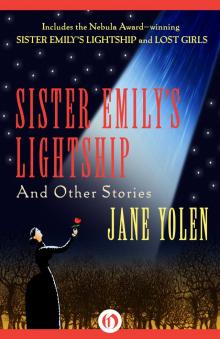 Sister Emily's Lightship
Sister Emily's Lightship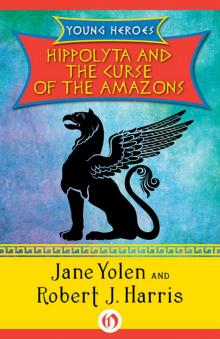 Hippolyta and the Curse of the Amazons
Hippolyta and the Curse of the Amazons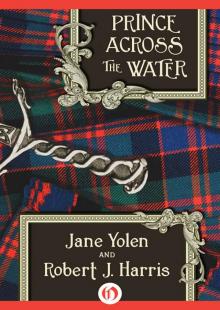 Prince Across the Water
Prince Across the Water Dragon's Heart
Dragon's Heart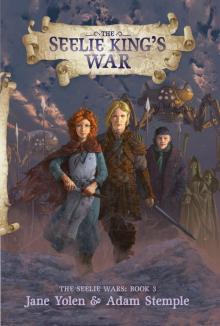 The Seelie King's War
The Seelie King's War Among Angels
Among Angels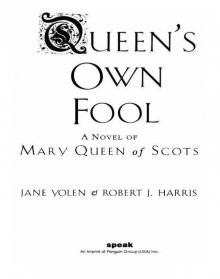 Queen's Own Fool
Queen's Own Fool